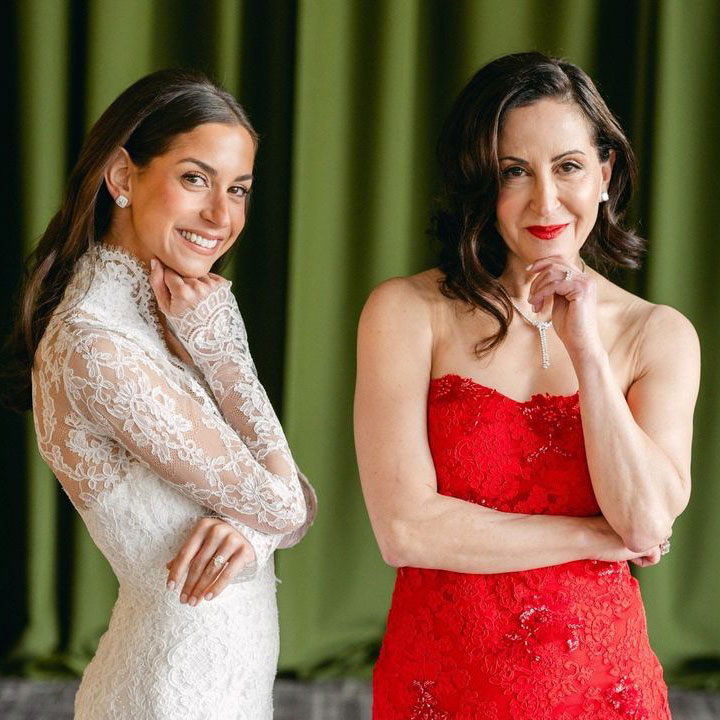Downsizing: my breast reduction. Chatelaine Magazine, July 1997
By Michaels-Evelyne
The decisive moment came in–of all places–a store fitting room. I had been considering breast reduction surgery for about a year, and hesitating to take such a drastic step. But there I was, engaged in another frustrating attempt to find a bathing suit that would contain my size 38 DDD assets. The new suit would have to be ordered and specially engineered, and in all probability, black–which, as we all know, tends to minimize things. I looked at myself in the mirror and started to cry.
My discomfort over my breasts was nothing new. At puberty, I seemed to blossom directly to a size C, which got me lots of negative attention–unwelcome comments from certain boys, envious looks from certain girls. Later, when I gained weight from my two pregnancies, most of it ended up on my chest.
While I knew my breasts were healthy, sensual and had nourished my children, their size had never pleased me. By the time I decided to have breast reduction surgery last year, I could barely fit into a size 38 DDD or E bra. Buying clothing was a challenge: jackets and blouses always gaped, and shopping for bins and lingerie was expensive and difficult. As for brightly colored tops, clingy sweaters, camisoles–they were out of the question. And there was more to my discontent than wardrobe limitations.
For years, I had tolerated unpleasant physical symptoms–painful shoulder grooves from the pressure of my bra straps, neck pain, tension headaches, painful rashes in the creases under my breasts, a condition known as intertrigo. (Other large-breasted women may complain of back pain. chest pain, and numbness in the hands and arms.) I avoided activities such as jogging, walking or aerobics–the sheer weight of my breasts made them difficult. Less well-endowed women often yearn for larger breasts and obtain them through padded bras, external breast “enhancers,” surgical implants. They may not understand the drawbacks of what my grandmother called “an ample bosom.”
But for thousands like me, the problems are all too real, and that’s why in 1995-96, about 12,000 Canadian women chose breast reduction surgery, or reduction mammaplasty. In fact, the procedure is more common than breast augmentation surgery. And although it has been around for decades, the operation is more. available and socially acceptable than ever before, says Dr. Gerald Moysa, a University of Alberta professor and president of the Canadian Society of Plastic Surgeons.
Until my moment of truth in the fitting room, I had resisted the surgery for several reasons. As a health writer, I knew that breast reduction surgery is regarded as safe, and that women who have the operation are almost unanimously delighted with the results: more than 90 percent express satisfaction. But I had never undergone any kind of surgery and was, quite naturally, hesitant about having a surgeon cut away a healthy portion of my body. I worried that I would be one of the unlucky few who suffer a serious anesthetic complication. I also had long-held reservations about cosmetic surgery, feeling that people–women in particular–should never risk their health to conform to society’s impossible ideals of eternal youth and narrow definitions of physical beauty.
I raised my concerns with my family doctor. He said I was a good candidate for breast reduction, and recommended several qualified surgeons. The first doctor I consulted advised that, because my breasts were so large, I would need a free nipple graft procedure. Unlike the more commonly used pedicle technique–where the nipple and its surrounding areola aren’t completely severed free nipple grafting involves completely removing, then grafting back the nipple and areola onto the smaller, newly shaped breast. This almost certainly means a permanent loss of sexual sensation in the nipple, a prospect that almost made me abandon the idea of surgery then and there.
Fortunately, I sought a second opinion from Dr.Mitchell Brown, a plastic surgeon specializing in cosmetic and reconstructive surgery at Women’s College and Mount Sinai Hospitals in Toronto. I told him I wasn’t expecting cosmetically perfect breasts, just smaller ones. Of course, I hoped the scars wouldn’t be too prominent–but I also knew that scarring, which can sometimes be extreme, is inevitable.
After examining my breasts, Dr. Brown said the less drastic pedicle technique would probably work for me, with a better chance of preserving normal nipple sensation. Reassured, I scheduled the surgery with him that day. While I knew that my breasts would look and feel better after the operation, I was concerned about the long-term health effects. In fact, research suggests there may be some health benefits–a U.S. survey published in 1995 found that nearly two-thirds of women who underwent reduction reported becoming more physically active after breast reduction, and many lost weight. There is also preliminary research suggesting that breast reduction surgery may actually reduce the risk of developing breast cancer.
A recent study by Dr. Brown and his colleagues at St. Joseph’s Health Centre and the Ontario Cancer Treatment and Research Foundation looked at 28,042 Ontario women who underwent breast reduction between 1979 and 1993. They found 39 percent fewer cases of breast cancer than would be expected for that group of women. “It is possible that in removing breast tissue we’re also removing certain cells that, if left in place, might develop some malignancy,” says Dr. Brown. “One thing the study clearly indicates is that breast reduction surgery does not increase women’srisk of breast cancer.”
My husband of 20 years accompanied me to the hospital the morning of the surgery. Some women say husbands and boyfriends–who sometimes take a proprietary interest in their partner’s breasts and don’t always think “less is more”–discourage their desire for smaller breasts, but David was very supportive. “You’re the one who has to live in your body. Do what makes you comfortable,” he told me.
The surgery took two hours. When I woke up, feeling spacey from the morphine, there was a large surgical dressing across my breasts, held in place by one of my old bras, minus the underwire. I remember being immediately thrilled to see how much smaller my breasts had become. Later, Dr. Brown told me he had removed a staggering 4,500 grams, or close to 10 pounds, of breast tissue from both breasts combined–just about what my second son weighed at birth. He predicted that once the swelling subsided and my breasts reached their final postoperative size and contour–about six months hence–I would have dropped from a size 38 DDD to a size 38 B or C. As is routine, the excised breast tissue was sent to the hospital’s pathology department to be examined for any cancerous or precancerous changes. Such lesions are discovered in a very small minority of women. I was relieved to learn, a week later, that my tissue was apparently healthy.
The postoperative period turned out to be less uncomfortable than I had anticipated, although the incisions felt tender, and my breasts felt swollen and rather numb, almost as though they weren’t attached to my body. Each woman’s experience is different, but for me, the worst part was being unable to sleep comfortably on my side for the first few weeks. Breast reduction is considered major surgery, and it takes time to recover. Dr. Brown advised me to hold off on normal activities for one to two weeks, and to avoid stretching, heavy lifting or intense exercise, which could impair healing, for six weeks. I had to wear a soft bra over the dressings 24 hours a day for the first six weeks.
The single worst moment occurred about 10 days postsurgery, when I removed the dressings and looked in the mirror for the first time. Intellectually, I knew there would be extensive scars and that these would eventually fade. But I was emotionally unprepared to see my previously healthy, unblemished breasts now bruised, swollen and marked by angry red suture lines. I cried for a long time, feeling almost as if I had betrayed my own body. Much later, I realized that my reaction didn’t mean I regretted the surgery itself. Instead, it was the sense of mutilation and vulnerability that some people feel after surgery.
A few days later, Dr. Brown removed the last dressings and the silk tape over the sutures. He told me I was doing well, although my left breast, which had undergone more tissue removal, was considerably more swollen and painful than the right one. Although the throbbing ache over the incisions eased fairly quickly, I continued to have periodic shooting and stabbing pains over the next few months–a normal part of the healing process.
As with any surgery, complications can occur after breast reduction, but most of these are not serious. The most serious complication is partial or total necrosis (death of tissue) of the nipple, which, according to the Canadian Society of Plastic Surgeons, occurs in only about 1 percent of cases. Further surgery is usually required to repair or rebuild the nipple.
About two months after the surgery, I ended up with a fat necrosis: a five-centimetre area of tissue in my left breast lost its blood supply and formed an internal scar. This has left me with a hardened area just above the left nipple that aches from time to time. My surgeon says the pain will subside, and the lump will probably vanish in several months. If not, I can have the tissue surgically removed under local anesthetic. I will also require a new baseline mammogram within the next year and become acquainted with how my reduced breasts feel so that I can be alert to any unusual lumpiness or other changes.
Four months later, the external scars have virtually disappeared. My breasts look and feel–dare I say it?–quite lovely, although, because internal healing takes time, it will be a few more months before they reach their final shape and contour. Thanks to the skill of my surgeon, I have also retained complete nipple sensation. Am I happy I did it? Absolutely. For the first time in my adult life, my shoulders don’t hurt, and I haven’t had a tension headache since. I enjoy the freedom of pulling on a sweater or T-shirt and, occasionally, going without a bra. The first time I tried on a tailored jacket and it zipped up neatly over my smaller breasts, there were actually tears in my eyes. And while I am still dealing with a lifelong weight problem, my feelings about my body have improved greatly.
A few weeks after the surgery, my best friend, Joanna, asked to see what my new breasts looked like, and without a moment’s hesitation I whipped off my shirt and displayed them, bruises, swelling, suture lines and all. I realized it was the first time in an otherwise intimate 30-year friendship that I had ever felt comfortable revealing my breasts to her.
Breast reduction surgery hasn’t changed my life. I never expected it to. But I do feel more energetic and self-confident. Not long ago, my younger son asked me if we could go swimming, an activity that usually made me miserable and self-conscious as I struggled into my old black swimsuit. “Sure, hon,” I told him, and then realized with delight that I meant it. The next week I went out and bought a brand-new bathing suit, off the rack. It’s aqua and purple.
Each year, thousands of Canadian women undergo breast reduction surgery. Most want to reduce the weight of uncomfortably large breasts; a small number seek to correct an asymmetry–one breast is considerably larger–caused by a developmental abnormality or as a result of surgery for cancer.
There are two main types of breast reduction surgery. Your surgeon will explain what’s best based on the size of your breasts: Pedicle techniques are recommended for moderately large or heavy breasts. The surgeon removes excess breast tissue and skin while preserving a central breast mound (the nipple and areola are repositioned but remain attached to their blood and nerve supplies). The incisions are usually made under the crease of the breast (sometimes extending out to beneath the arm), around the nipple and areola, and vertically down from the nipple. In many cases, nipple sensation is preserved –although patients should be prepared for some loss of sensation–and some women, in fact, report that their nipples have improved sensation.
Between 40 and 60 percent of women are unable to breast-feed successfully after this surgery. A free nipple graft technique may be advised for women with very large and pendulous (drooping) breasts. Because the nipple is so far from where the surgeon wants to place it, the nipple and areola are removed from the breast and grafted back onto the reduced breast. While some women recover breast sensation after nipple grafting, doctors usually advise patients not to expect it. Almost 100 percent are unable to breast-feed later.
If you are considering breast reduction, choose a surgeon carefully. In Canada, many doctors, including dermatologists and ear-nose-and-throat specialists, can advertise that they do plastic surgery. While they may be qualified to perform certain types of cosmetic surgery, it’s best to go to someone who does a good deal of breast surgery. (For names of qualified surgeons in your area, call Canadian Society of Plastic Surgeons at 1/800/665-5415.) The surgery, which usually takes place in the hospital and requires a one- or two-night stay, costs between about $2,000 and $3,000. The operation is currently covered by health insurance in all provinces if it is deemed medically necessary. The criteria for coverage do vary. In some cases, it’s based on the amount of breast tissue being removed, along with the presence of physical symptoms. The average breast reduction involves removing 500 to 750 grams (about one to one and a half pounds) of tissue per breast. For most women, this means going down two cup sizes–for example, from a DD to a C.
FC: Copyright 1998. All rights reserved by original publisher and copyright holder.





